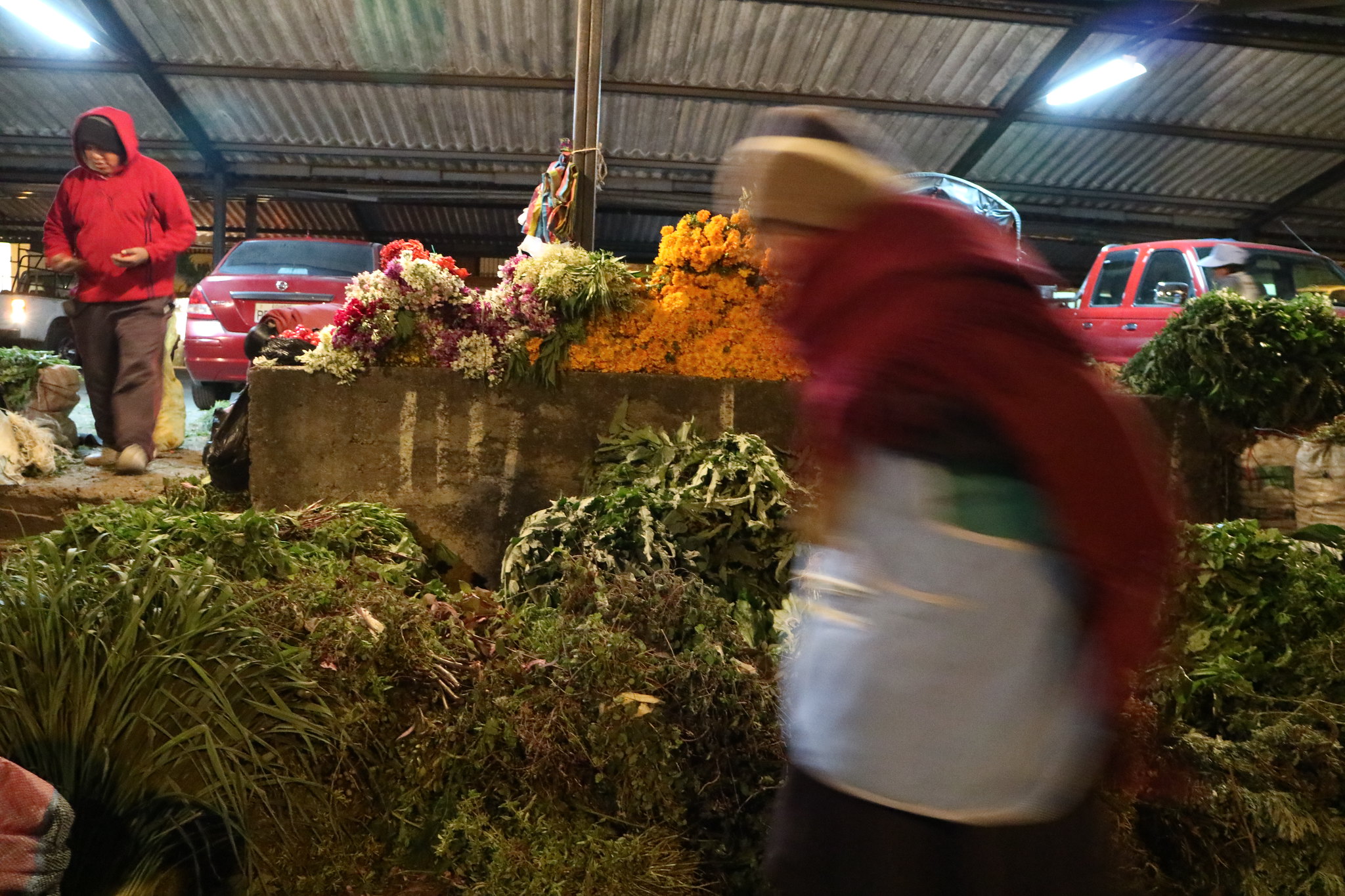(1) “Land and food as a philosophical and life principle, which is built through unrestricted solidarity with movements in defense of territoriality, using the pedagogy of example as an instrument;”
Speculating Pacts on the Common
Each one of these experiences weaves together the becomings and tactics that trouble the foundations that build our ideas of State, community and political action. In this sense, we understand these processes as speculative precisely because they extrapolate a present considered atrophied.
In the context of the crises of Western ways of living, inspired by counter-hegemonic modes of community organization, we seek ways to rethink the category of 'social pact' consolidated by modern political theory in its instances of power, governance and representation, as well as in its ontological and epistemological foundations. Imagining and activating social pacts through methodologies that produce the common is a task that not only questions the institutional organization of the present, its structural myths, forms of maintenance and naturalization, but also embodies the experimentation of instituent practices: social forms that allow for the reinvention of collectivities. These experiences propose structures that consolidate horizons of emerging self-determinations, and at the same time, speculative processes.
We start from the social pact as a field of symbolic experimentation to observe the ways in which colonialism used speculation as the pillar for contemporary institutions. At the same time, we seek to think of ways to address this field based on concrete practices, namely the urban quilombo Aparelha Luzia, the community articulations of Teia dos Povos and the elaboration of the Mantos Tupinambás.
Each one of these experiences weaves together the becomings and tactics that trouble the foundations that build our ideas of State, community and political action. In this sense, we understand these processes as speculative precisely because they extrapolate a present considered atrophied. Therefore, speculating situated pacts on the common is also a way out, an escape from the pact made by the colonizers — an escape outwards and inwards, which composes an ongoing cosmopolitical fabric.
The juridico-political foundation of modern society has been understood through the theoretical lens of the social contract. Through a timeless narrative, the theoretical imaginary of the contract draws the genealogies of the modern State as a product of eurocentric narratives of the world. Thomas Hobbes, considered a benchmark of contractualism, argued in 1651 that the state of nature (described as "the war of all against all") would be responsible for producing widespread fear and the consequent need for a social pact. Such a contract would represent the break from the form of sociability described as “primitive” (state of nature) and the linear development to a form of sociability considered as “civilized” (contractual or civil society). Even today, these have been the onto-epistemological pillars of the fabrication of the State based on the notions of sovereignty and common will.
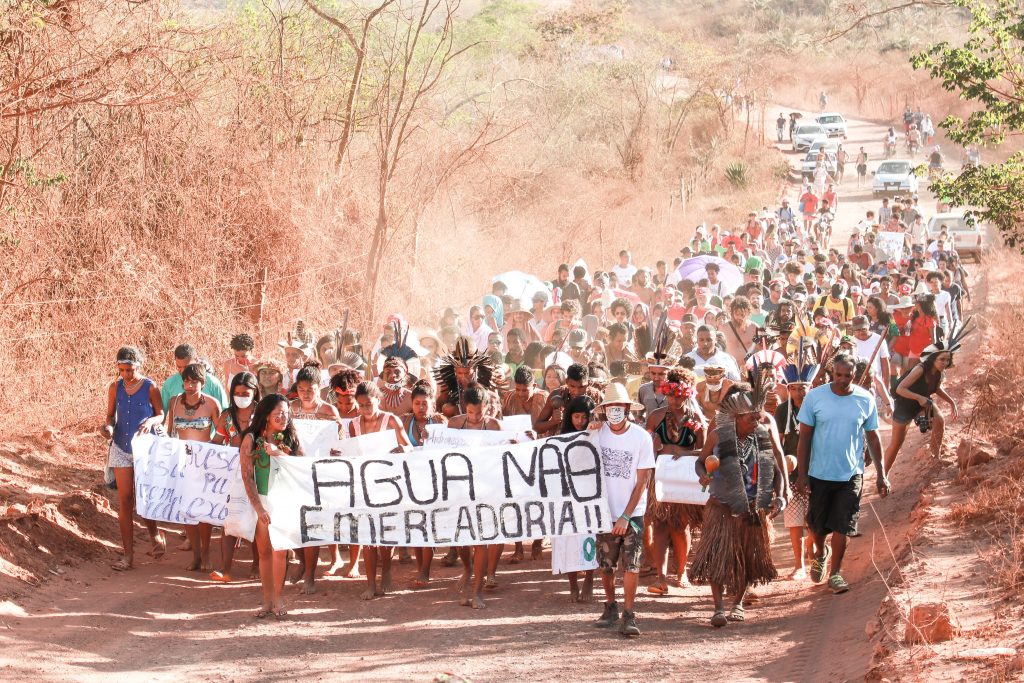
The architecture of power forged by the social contract should not be perceived as mere fictitious speculation. On the contrary, this eurocentric imaginary constitutes the epistemic foundation of the colonial, liberal and constitutional theorization of modern power, producer of the current juridical and political grammars. In this sense, it is important to understand the social pact as the ground for the emergence of the universal principles of equality, liberty and fraternity, produced mainly in the 17th and 18th centuries in Western spatialities, in a significant period of anticolonial struggles in the territories we now call “Latin America.” Is it mere coincidence that the theoretical canon of the social contract was produced after the colonial invasion perpetrated at the turn of the fifteenth to the sixteenth century? How can one speak of a "pact" in the colonial context, in which almost half of the population was recognized as property and subjected to slavery in Brazil? Who signed the social contracts of modern States in Améfrica Ladina?1
By locating the colonial framework in which the modern state was fabricated and universalized, we seek to map practices that have been continuously contesting, (re)occupying and (re)inventing communal spatialities and counter-colonial forms of sociability. The movement described here deviates from the colonial use and definition of cartographies instrumentalized to measure, represent and control bodies and territories. Through an engaged geography, a cartography of insurgent architectures of aquilombamento and aldeamento becomes an ally of political territories and spatialities that sabotage the social-colonial contract, while establishing other pedagogies and communal technologies.
Aparelha Luzia, an Urban Quilombo
Founded in April 2016 by the curator, educator and activist Erica Malunguinho, Aparelha Luzia is a space of mediation, creation and circulation of Black arts and anticolonial narratives. Located in the region of Barra Funda, in the city of São Paulo, the spatiality of Aparelha Luzia is an urban quilombo, part of an ancestral and Afro-diasporic process of repossession (reintegração de posse). In the words of Malunguinho, “It is the result of a Black historicity that precedes us, that refers to the Malian peoples, to the Black Experimental Theater, to the recent Black Occupation of Funarte, the Quilombo dos Palmares, the Unified Black Movement, the Maracatús... I think the feeling that is so well provoked here has to do with memory and ancestry.”2
“Aparelha” rewrites in feminine the term aparelho (apparatus) used by leftist mobilizations during the civil-military dictatorship to designate a place of meeting, articulation and resistance. “Luzia” reactivates the memory of the first fossil found in the lands we now know as Brazil. The fossil of a woman named by science as Luzia. “Luzia is Black and walked on the territory we know as Minas Gerais. Luzia is also a quilombo of women,” explains Malunguinho.3 The history of the quilombo and its unfolding in the present configure a crucial key for the comprehension of the political and aesthetic proposals developed in and by Aparelha.
The notion of quilombo demands a complex and porous articulation, involving its multiple performative dimensions: physical and symbolic, poetic and political, historical and actual, of resistance and of re-existence.
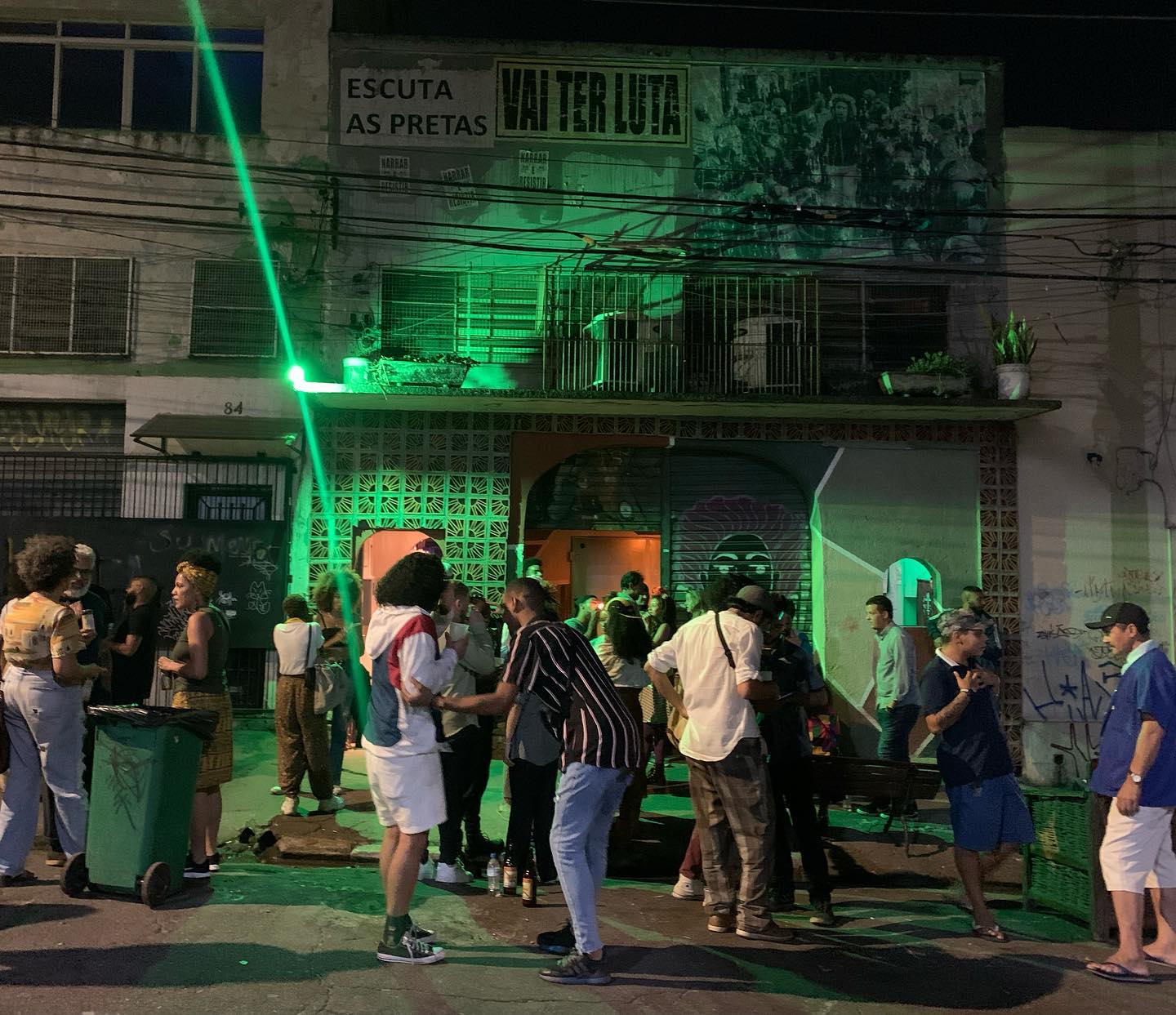
Historically, the quilombo emerged in the period of “Afro-Pindoramic colonization,” as explained by the quilombola philosopher Antonio Bispo dos Santos; “Pindorama” or “Terra das Palmeiras” was how the people of Tupi origin named the spatiality that would come to be known as “Brazil.”4
During the modern slavery period, the quilombo or mocambo communities were composed mainly of Afrodiasporic people, as well as Indigenous people and some white deserters. We follow Beatriz Nascimento and Abdias do Nascimento in understanding the quilombo as a continuous movement of resistance embodied by the fugitivity, the contestation and the re-existence against and within the imposed order.5 That is, the formation of these communities is materialized through the anticolonial struggle and the need to experience other forms of living together. However, far beyond the narrative of war and the fiction of the social contract, the quilombo refers to the living memory, to the interplay of body and knowledge, to the technologies that have been continuously activated and reinvented in bodies and territories. These practices have been territorialized within associations, terreiros, afochés, samba schools, gafieiras, favelas, etc.
The historian and poet Beatriz Nascimento referred to this inventive gesture of re-existence as “quilombola peace” (paz quilombola).6 “The quilombo is an advancement, it is to produce or reproduce a moment of peace. Quilombo is a warrior when it must be a warrior. And it is also a retreat if the struggle is unnecessary. It is sapience, wisdom. It is the continuity of life, the act of creating a happy moment, even when the enemy is powerful, and even when he wants to kill you. The resistance. A possibility in days of destruction.”7
The quilombo territorializes itself as a physical space, as well as an existential, poetic, political and pedagogical territory. In an anti-Black world, Aparelha Luzia aquilomba (quilombo as a verb, meaning “to turn into a quilombo”) and offer a site of sociability and affection where Black protagonism is central.
Through a political and aesthetic positioning, the ilê host varied and frequent political, festive, pedagogical, gastronomic, artistic, and musical encounters. As Malunguinho invokes, Aparelha is a territory of “artivism for the aesthetics, for the discourse [...] for the knowledge lived from the heterogeneous Black cultural embodied experiences.”8
Teia dos Povos, Creole Seeds and the Construction of Sovereignty in the Territories
Teia dos Povos defines itself as an articulation of rural and urban communities, territories, peoples and political organizations that seeks to build an alliance of Black, Indigenous and Popular struggle opposed to latifundia and detached from the institutions of the State. Teia is organized in grassroots nuclei and allied social movements, in a network of joint action in different parts of Brazil. The struggle to organize the conditions for the production of existence in these territories is guided by food sovereignty and its relationship with other territorial sovereignties, such as hydric, energetic and pedagogical sovereignties.9
The dispute for the meanings of the land goes beyond the understanding of its materiality as a means of production to consider it as the ambience in which life itself continuously emerges, and where reclaiming ancestral ways of relating to the territory takes place. Teia has three founding principles, reaffirmed as a common horizon:
(2) “Working and studying for a kind of freedom that makes it possible to build a new way of life, deconstructing the heritage of capitalist, racist and patriarchal models;”
and (3) “Reaffirming the ancestral gaze in the construction of a new time, contextualized in our own way.”10
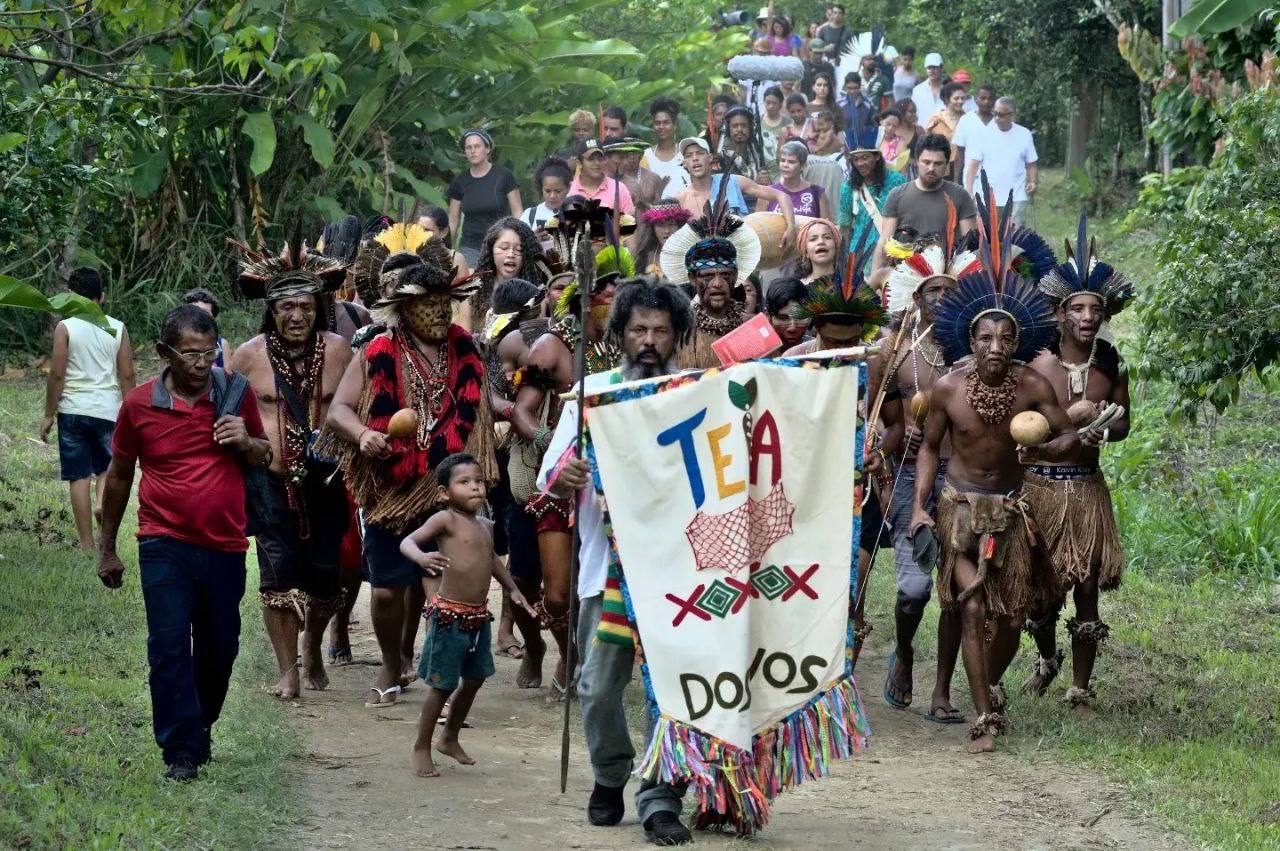
The paths of collective emancipation guide the steps towards a transdisciplinary and intergenerational link in the work necessary for the care and defense of the territory. Its foundations are the different ancestral knowledge practiced in traditional and agroecological forms of cultivation, materialized in creole seeds: seeds developed with and maintained by Indigenous peoples, quilombolas, farmers, and campesinos in the Americas, generally with great genetic diversity, adapted to the climatic particularities of their regions and cultivated according to the stories of their communities.
Since the 1960s, the use of pesticides, industrial inputs and corporate seeds, supposedly “improved”, destroys the health of bodies and the fertility of soils, eroding agrobiodiversity and family farming, as they are not reproducible. The free circulation of seeds is compromised, as biopiracy is entangled in intellectual property over food varieties. Facing renewed methods of expropriation of life, the power of native seeds is made present in the continuity of species and in the subsistence of communities and their doings. Strategies for the management of agrobiodiversity involve the establishment of networks and seed banks, the recovery of millenary species, the diversification of crops, and the dissemination of traditional knowledge, reinstituting forms of technological and economic autonomy.
The organization experiences within Teia dos Povos mobilize communal structures that predate the implementation of the nation-state and its modern and colonial institutions. To take the native seeds, or "passion seeds" (as they are called in Paraíba), as the political foundation for other becomings in our communities is to know that “they are symbols of life in abundance, inheritances left by the ancestors, cared for today so that future generations will continue to have access to this important good.”11 For Mestre Joelson Ferreira, leader of Movimento Sem Terra, founder and advisor of Teia dos Povos, the emancipation of peoples in struggle implies the organization of communities in the regeneration of their biomes and ways of life, building dignity from and through the territory. The gesture of sowing life to come persists in these movements of elaboration and self-management of collective technologies for the reclaiming of the land, the restoration of memory and the reinstitution of freedom.
The Tupinambá Cloak, the making, and the decolonization of the Sky
The Tupinambá cloak is a ritual element that appears in the records of French and Portuguese settlers in the Pindorama territory, directly associated with anthropophagic rituals. Made mostly with red feathers of the Guará bird, the garment covers the body and the head. Several European settlers took cloaks to their continent, transforming them into clothing for the aristocracy and objects for cabinets of curiosities. Recently, eleven stolen Tupinambá cloaks were identified in Paris, Brussels, Basel, Milan and Florence, transported at different times between the sixteenth and eighteenth centuries. The cloaks remained exiled in European museums until 2000, when one of them, currently in the Nationalmuseet in Copenhagen (Denmark), was brought to the exhibition "Mostra do Redescobrimento” in São Paulo (Brazil). There it was seen by Nivalda Amaral de Jesus and Aloísio Cunha Silva, leaders of the Tupinambá community in Olivença, Bahia, and an unsuccessful restitution process began.
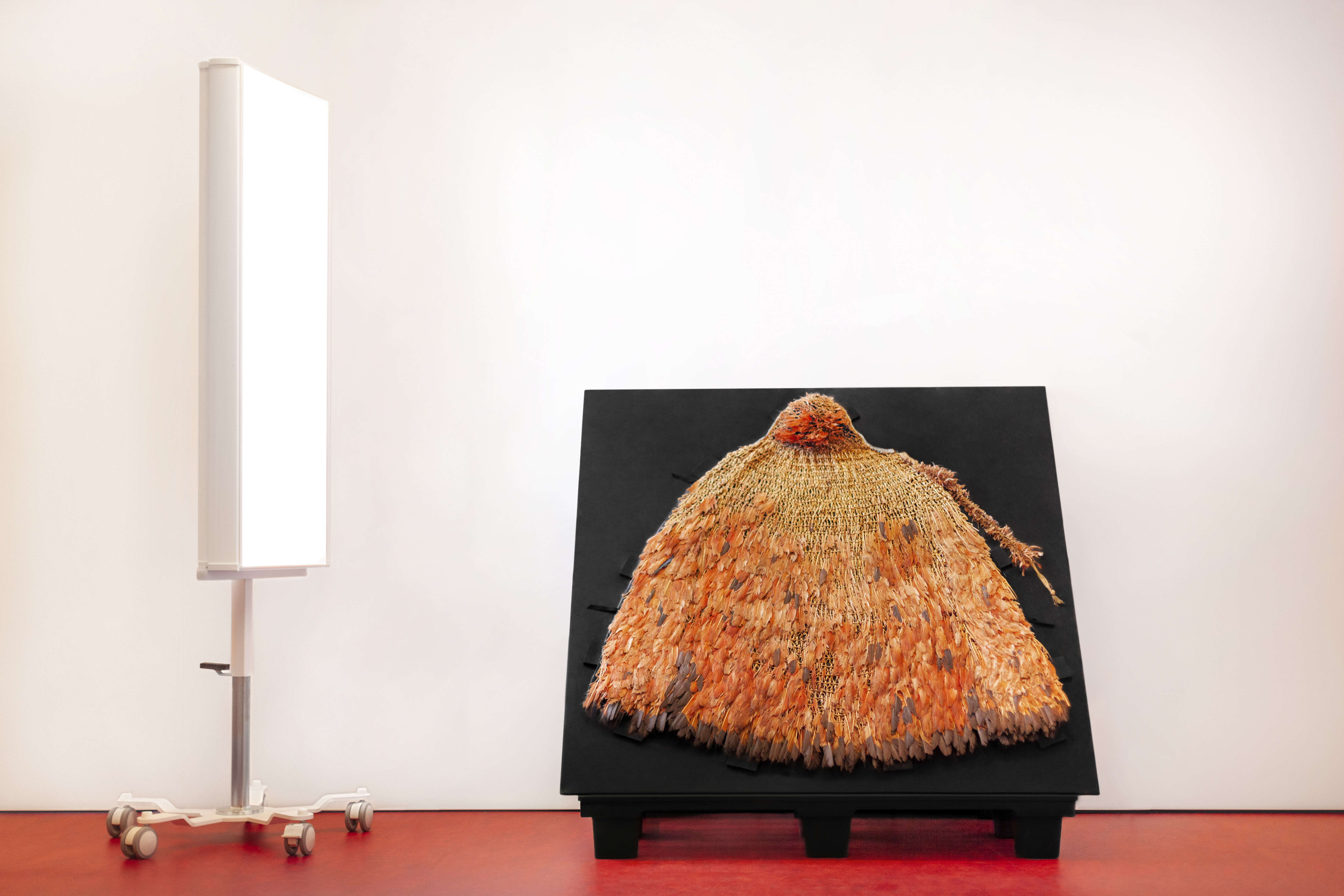
The cloaks remain in exile, shelved under heavy glass, with restricted access and laden with bureaucracy. The garments and their places of storage and exhibition were documented in the work of the artist Lívia Melzi,12 alongside extensive research on their travels, documentation and forms of conservation. Her work addresses the museum as a device that manages the power of objects, both in the field of copyright law and in the manipulation of its manatic capital. We are faced with the way in which a certain episteme confronts a past that is not its own, despite taking it for itself. However, the making of the cloak narrates other processes of demarcation. Glicéria Tupinambá, artist, activist and researcher, tells us that the cloak is an “expansion of the indigenous territory” in Europe: “Pindorama reached the old world; it is not only the old world that occupied the new world.” By taking away different ritual objects, people and paintings, they demarcated the Brazilian territory, but, at the same time, they also made the occupation of the European territory possible.
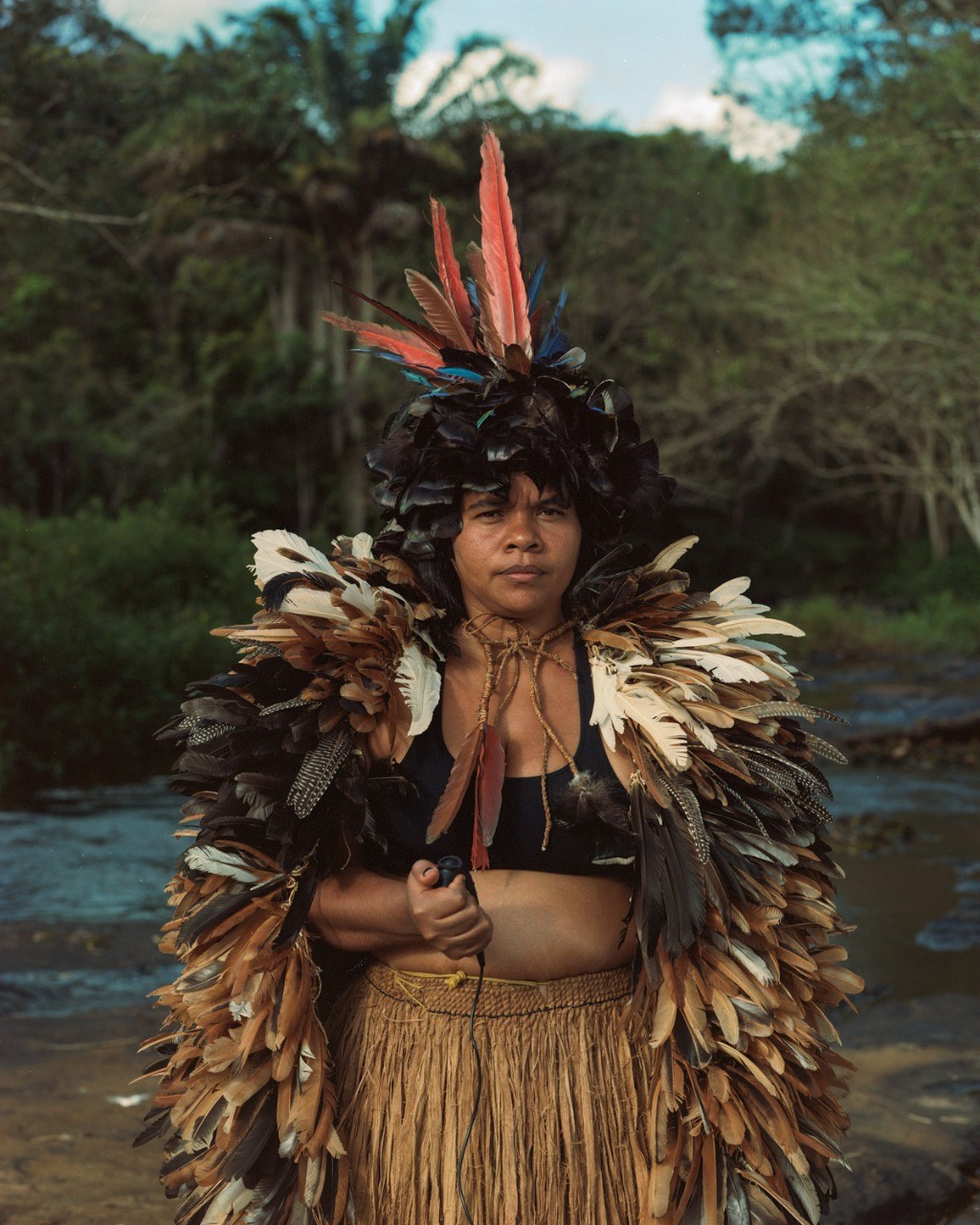
The cloaks articulate other ways of being-doing. “Despite the glass that takes away their oxygen,” writes Edimilson de Almeida Pereira in the poem De volta ao sol, “the red blood of the guará and the blue ocean of the araruna [macaw] keep something that exceeds the national museum of Copenhagen.” In this poem, which is part of the catalog of the exhibition Kwá Yepé Turusú Yuiri Assojaba Tupinambá13 [The Great Return of the Tupinambá Cloak], we find the inability of these institutions to deal with the excess of materiality of the cloaks: their very condition of being.
Despite the frustrated struggle for restitution, another movement began to unfold: the making of a new cloak by Glicéria Tupinambá. Through conversations with the women of her family and her father, a visit to the imprisoned cloak in the Paris museum, old images and documentation, conversations with encantados in dreams, the process of creating new cloaks was carried out. In the end, four cloaks were created. The story of her relationship with the cloak and the process of crafting it, narrated by her on different occasions,14 weave together the threads of an important process of restitution and institution.
The new cloaks are different from the old ones. “This cloak is not a copy of the old one, a replica. It is not. This is the Tupinambá Cloak, it is the cloak of the territory, it was made with things from the territory itself and has the energy of the territory itself,” she writes.15
Memory, as we know, is not the repetition of the past, but its activation in the making and remaking of the present through difference. This activation makes it possible to articulate what was, what is and what will be. In the process of weaving, the cloak is made together with the collective memory of a community.
More than an object, "it is an entity, a personality;” as Glicéria tells us, it "taught us how to make it.” Along with its fabrication, the institution and the ritual appears. The cloak is, in fact, “building a ritual.” Not only because the cloak was used in Tupinambá rituals, but because it is revitalizing and reclaiming a certain cosmological process. For Glicéria, “what it generates today, in this thought of making the cloak, between the past and the present that it teaches us, is a bit of that, to talk about the cosmos, about our cosmovision, about our cosmogonies, about what it brings us... people talk a lot about this ancestry; and which ancestry is this? How can we understand what it teaches us, how can we understand it, which path does it lead us to?” It is a way, in her terms, to “decolonize the sky”.
The making is foundational, it is instituting. To make is to make worlds. In this proposition, the recent mobilization around the Tupinambá Cloak is a fabric made of creation, memory and enchantment. The instructions for the fabrication of the cloaks are rooted in the memory of many, in the vision of others, in the dreams of some and in the speculative fabulation guided by encantados. In the history of the making of the cloaks, the creation of a community that reimagines its artifacts appears and reclaims its legitimate materiality: the creation becomes the foundation.
The singular experiences of organization presented by the Aparelha Luzia, the Teia dos Povos and the weaving of the Tupinambás Cloaks, in their specific disputes and technologies, constitute pedagogical horizons that restitute counter-colonial ways of living, designing situated methodologies of fugitivity and instituent doings. With this mapping, we seek to mobilize collective practices that activate memories and open paths to what we address here as “speculative pacts on the common.” These experiences lead us to imagine other cosmopolitical possibilities, in the most radically diverse ways of performing and building communities and territories.
